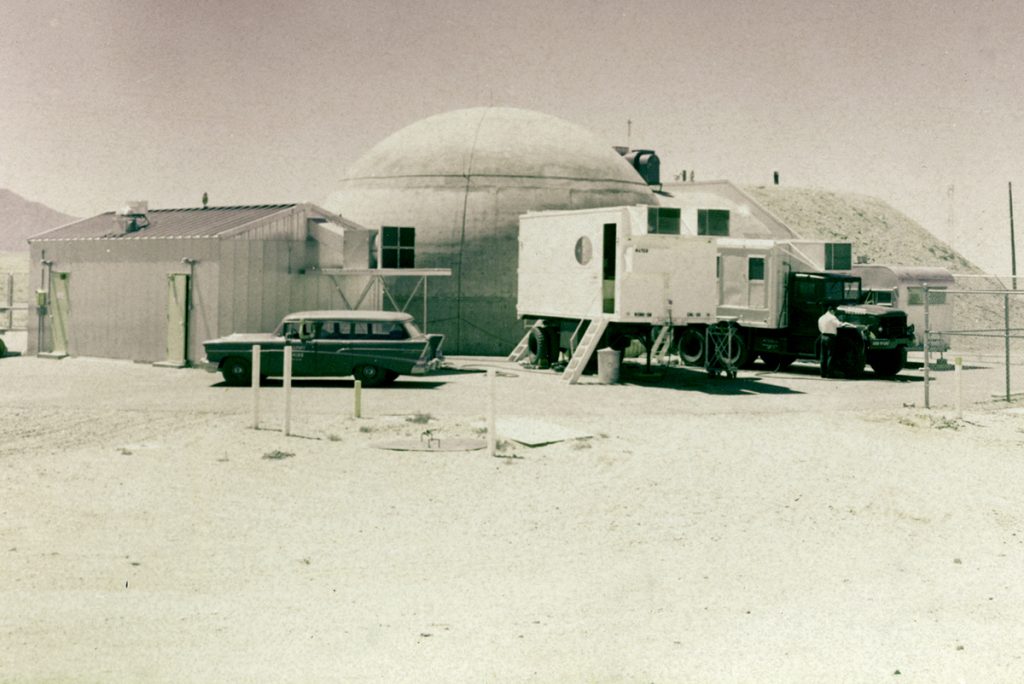ALBUQUERQUE, N.M. —The Sandia National Laboratories Pulsed Reactor (SPR) rides off into the sunset, headed toward Nevada. It leaves behind the operators who are sad to see such an important part of Sandia National Laboratories’ work and history leaving the Labs.
The Sandia Pulse Reactors provided intense neutron bursts for radiation effects testing of materials and electronics. They were used primarily for narrow pulse, high dose rate testing of electronic devices.
Sandia is a National Nuclear Security Administration (NNSA) laboratory.
One of NNSA Administrator Tom D’Agostino’s six focus areas is to reenergize NNSA’s nuclear material consolidation and disposition effort. SPR’s removal from Sandia is part of this undertaking. The project seeks to consolidate the locations of special nuclear material (SNM) in the hopes of reducing the cost of securing many SNM facilities.
All of the SPR configurations served to verify that certain weapons parts could withstand high doses of radiation. SPR II completed its first criticality in 1967, and SPR III in 1975. SPR I was operated at Sandia from 1961 to 1967.
SPR III came out of a five and a half year storage in 2005 in support of critical survivability testing for W-76 Life Extension Program and other testing for the Qualification Alternatives to SPR program. Resurrected from its in-ground storage vault, the reassembled reactor ran in the SPR Kiva from January through September of 2006, operating safely for 159 days and conducting 563 operations.
SPR III is being sent to the Nevada Test Site, where it will again sit in storage, awaiting a time when the nation may call it into service. Materials from SPR II will be sent to Los Alamos National Laboratory and to Savannah River for processing and disposition.
SPR’s departure saddens the staff that spent much of their careers building, maintaining, and using it in support of the nation’s nuclear weapon stockpile. Darren Talley, manager of nuclear reactor facilities, says that he is sad to see SPR go. “It’s a unique capability,” he says, “Everyone is feeling it.”
Among them, SPR’s staff has seen more than 13,000 operations of the SPR facilities. When SPR leaves Sandia, their skill and knowledge won’t travel with the piece parts to the Nevada desert. “It’s an operator’s reactor,” says Talley. “Each experiment changes the reactor. The operator’s experience with the machine was integral to successful operations.”
Sid Domingues, a Sandia SPR operator who worked with both SPR II and SPR III for more than 31 years, agrees. “The operation of SPR was heavily knowledge-based,” he says. Sid worked briefly on the rebuilding of SPR II, and served as part of the team that built SPR III in 1975. Sid is among only five people qualified to operate SPR, along with Sandians John Ford, Matt Burger, Don Berry, and the most recently qualified operator, Autumn Higgins.

In addition to the many dedicated Sandians, SPR’s removal required the careful and coordinated effort of many experts in the complex, says Dave Wheeler, manager of the Sandia SNM de-inventory project. Representatives from the Nevada Test Site and Los Alamos National Laboratory provided valuable expertise and equipment to streamline the process of moving and storing SPR III at NTS. Y-12 designed, tested and manufactured the shipping containers that will hold the unique SPR parts on their way up to NTS for storage.
Nuclear materials are categorized according to the amount of material at the site, the type of material, and the “attractiveness” of the material to certain groups. Category 1 and 2 materials, such as those required for SPR’s operation, require expensive measures to store, secure and work with.
NNSA charged Sandia with removing its category 1 and 2 special nuclear material by the end of 2008. SPR’s removal propels Sandia’s de-inventory project significantly forward in reducing the number of locations requiring the expensive security measures required for category 1 and 2 SNM. Dave Wheeler says the Sandia team intends to meet its 2008 deadline.
Sandia’s de-inventory project will continue to remove the remaining category 1 and 2 materials at the Lab. When the last of the SNM materials are gone, that highly-secure area can stand down its requirements and become a regular limited area, which is far less expensive than the security measures currently required.



